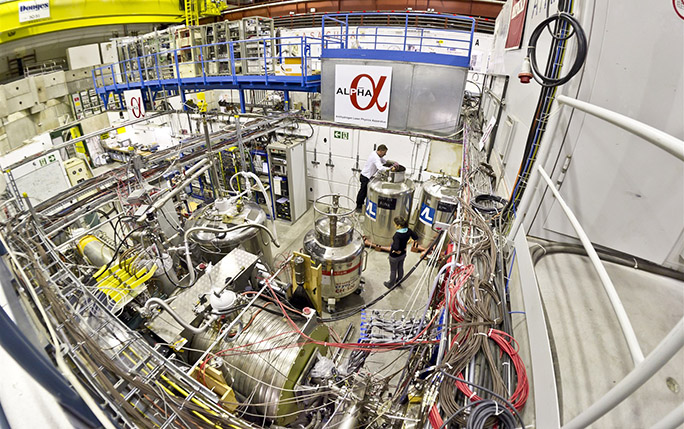ALPHA collaboration reports first measurements of certain quantum effects in antimatter

The ALPHA collaboration at CERN, which is closely related to the AVA network and involves for example AVA Supervisor Dr William Bertsche, has reported the first measurements of certain quantum effects in the energy structure of antihydrogen.
These quantum effects are known to exist in matter, and studying them could reveal as yet unobserved differences between the behaviour of matter and antimatter.
The results, described in a paper published in the journal Nature, show that these first measurements are consistent with theoretical predictions of the effects in “normal” hydrogen, and pave the way to more precise measurements of these and other fundamental quantities.
Finding any difference between these two forms of matter would shake the foundations of the Standard Model of particle physics, and these new measurements probe aspects of antimatter interaction, such as the Lamb shift.
The next big step will be to chill large samples of antihydrogen using state-of-the-art laser cooling techniques that rely on the work presented in the new paper. These techniques have the potential to transform antimatter studies and will allow unprecedentedly high-precision comparisons between matter and antimatter.
In ALPHA, antihydrogen atoms are created by binding antiprotons delivered by CERN’s Antiproton Decelerator with positrons. They are then confined in a magnetic trap in an ultra-high vacuum, which prevents them from coming into contact with matter and annihilating. Laser light is then shone onto the trapped atoms to measure their spectral response. This technique helps measure known quantum effects such as the so-called fine structure and the Lamb shift, which correspond to tiny splittings in certain energy levels of the atom, and were measured in this study in the antihydrogen atom for the first time.
The fine structure was measured in atomic hydrogen more than a century ago, and laid the foundation for the introduction of a fundamental constant of nature that describes the strength of the electromagnetic interaction between elementary charged particles. The Lamb shift was discovered in the same system about 70 years ago and was a key element in the development of quantum electrodynamics, the theory of how matter and light interact. The Lamb-shift measurement, which won Willis Lamb the Nobel prize in physics in 1955, was reported in 1947 at the famous Shelter Island conference – the first important opportunity for leaders of the American physics community to gather after the war.
The paper `Investigation of the fine structure of antihydrogen’ was published in Nature.